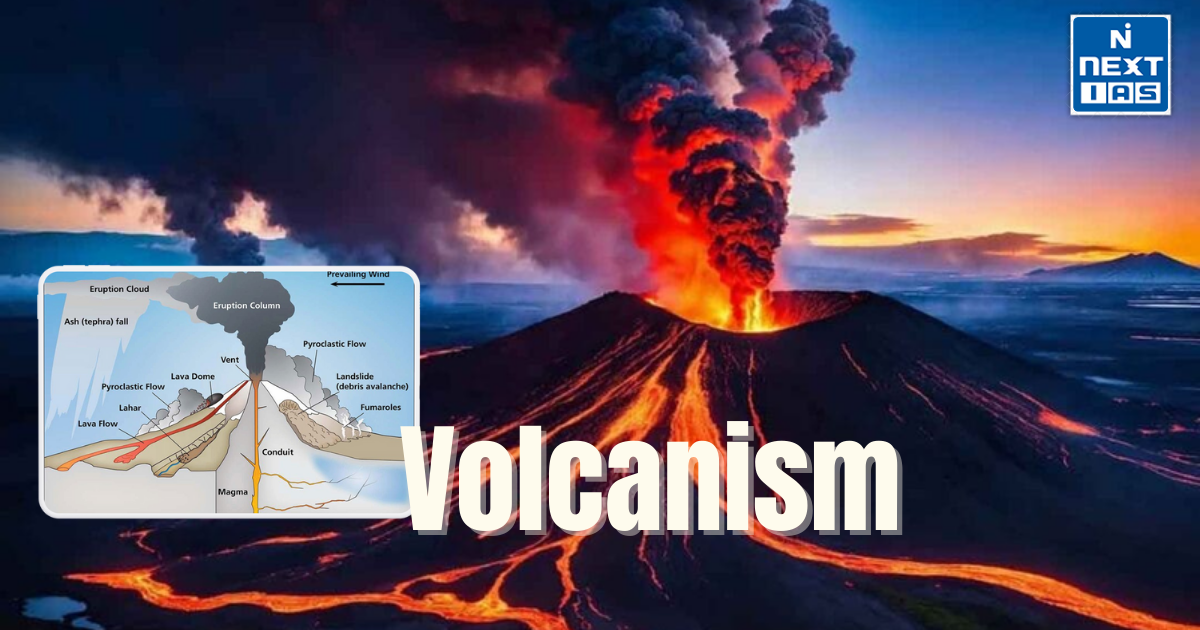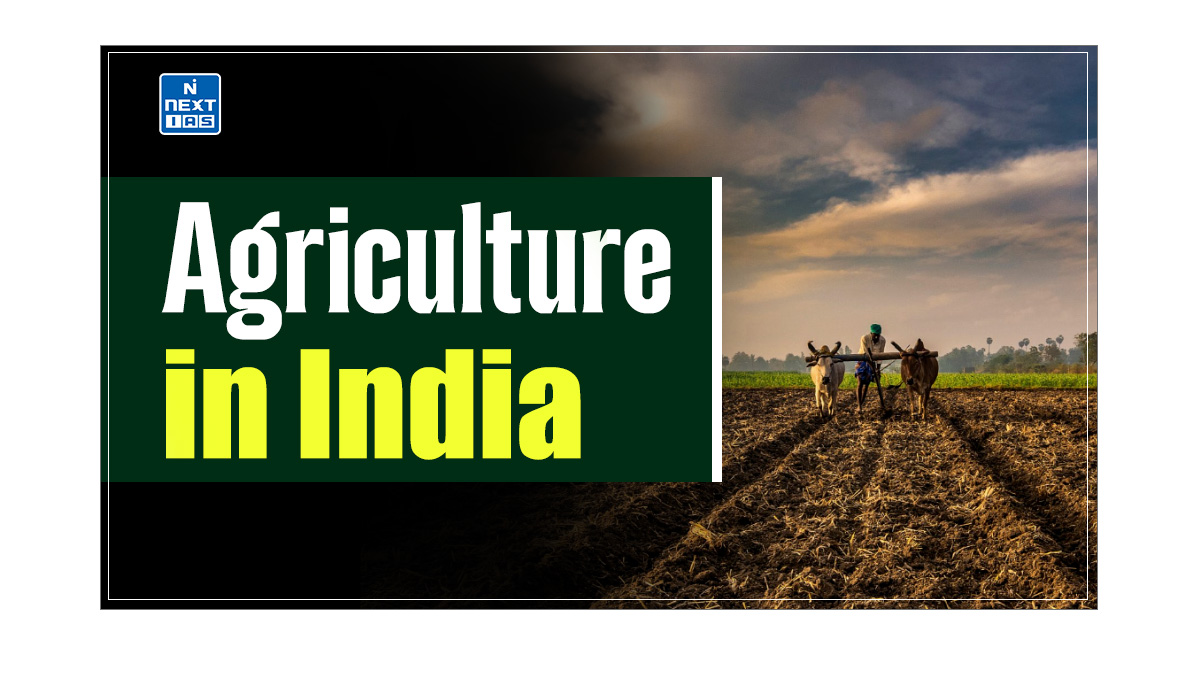
The Kaveri River System, one of India’s key river basins, is essential to the southern part of the Indian subcontinent. This river holds significant historical, cultural, and economic importance, providing crucial water resources for irrigation and hydroelectric power in the region. This article aims to study in detail the Kaveri River System, its origin, course, tributaries and other related aspects.
About Cauvery River System
- The Cauvery River System is one of the key river basins within the Peninsular Drainage System of India.
- The Cauvery River and its numerous tributaries flow through the southern part of the Indian subcontinent, creating lush agricultural lands and supporting a variety of ecosystems along its path.
- Spanning approximately 800 kilometres, the Cauvery is a crucial lifeline for the states of Karnataka and Tamil Nadu.
- Known as the “Ganga of the South,” the Cauvery has historical, cultural, and economic significance, playing a pivotal role in the irrigation and water supply for millions of people in the region.
Read our detailed article on the Peninsular Drainage System.
Origin of Cauvery River
- The Kaveri River (Kaveri) is designated as the ‘Dakshin Bharat ki Ganga’ or ‘the Ganga of the South’.
- It originates at Talakaveri on the Brahmagiri range near to Kodagu (Coorg) district of Karnataka.
- It flows in a south-easterly direction through the states of Karnataka and Tamil Nadu and descends to the Eastern Ghats with a series of great falls.
- Before flowing into the Bay of Bengal, the river divides into numerous distributaries, creating an extensive delta known as the “Garden of Southern India.”
Course of Cauvery River
- The Kaveri basin covers the states of Tamil Nadu, Karnataka, Kerala, and the Union Territory of Puducherry.
- It is bordered to the west by the Western Ghats, to the east and south by the Eastern Ghats, and to the north by ridges that separate it from the Krishna Basin and Pennar Basin.
- The Nilgiris, located offshore of the Western Ghats, extend eastward to the Eastern Ghats, dividing the region into two distinct areas: the Karnataka Plateau in the north and the Tamil Nadu Plateau in the south.
- The river originates from the South Karnataka Plateau and descends through the Tamil Nadu Plains, cascading down the 101-meter-high Sivasamudram Falls.
- This location is utilised for power generation by the Shivanasamudram power station.
- After the falls, the river’s two branches merge and flow through a wide gorge known as ‘Mekedatu’ (Goat’s Leap), continuing to form the boundary between Karnataka and Tamil Nadu.
- At the Hogennekkal Falls, the river shifts southward and flows into the Mettur Reservoir.
- A tributary called Bhavani joins Cauvery on the Right bank below Mettur Reservoir.
- Thereafter it enters the plains of Tamil Nadu.
- Two additional tributaries, the Noyil and Amaravathi, merge with the river on the right bank, causing it to widen with a sandy bed and flow as the ‘Akhanda Cauvery’.
- After approximately 16 kilometres, these branches reunite to create the ‘Srirangam Island’.
Tributaries of Cauvery River
The right bank and the left bank tributaries of the Cauvery River are:
Left Bank Tributaries
The left bank tributaries of the Cauvery River are:
- The Harangi,
- The Hemavati,
- The Shimsha, and
- The Arkavati.
Some of the important left-bank tributaries of the Kaveri River System have been discussed in the following section.
Hemavati River
- The Hemavati River is an important tributary of the Kaveri River, rises from the Western Ghats near Ballalarayana Durga in the Chikmagalur District of Karnataka and flows through Chikkamagaluru, Hassan District, and Mysore District before joining the Kaveri near Krishnarajasagara.
Right Bank Tributaries
The right bank tributaries of the Kaveri River are:
- The Lakshmantirtha,
- The Kabbani,
- The Suvarnavati,
- The Bhavani,
- The Noyil and
- The Amaravati.

Some of the important right-bank tributaries of the Kaveri River System have been discussed in the following section.
Kabini River
- The Kabini originates from Pakramthalam hills in the Wayanad District of Kerala from the confluence of the Panamaram River and Mananthavady River.
- The backwaters of the Kabini reservoir are very rich in wildlife, especially in summer when the water level recedes to form rich grassy meadows.
Noyyal River
- The Noyyal River rises from the Vellingiri hills in the Western Ghats in Tamil Nadu and drains into the Kaveri River.
- Noyyal joins with river Kaveri at Kodumudi in the Erode District.
Amaravati River
- The Amaravati River is also known as Pournami in the Kerala and Tamil Nadu border at the bottom of Manjampatti Valley between the Annamalai Hills and the Palani Hills in Indira Gandhi Wildlife Sanctuary and National Park.
- It descends in a northerly direction through Amaravati Reservoir and Amaravati Dam at Amaravatinagar.
- The Amaravati River and its basin, are heavily used for industrial processing water and waste disposal and as a result, are severely polluted due to a large amount of textile dyeing and bleaching units.
Major Soil Types Found in Cauvery Basin
The delta area is the most fertile tract in the basin. The principal soil types found in the basin are:
- Black soils,
- Red soils,
- Laterite soils,
- Alluvial soils,
- Forest soils, and
- Mixed soils.
| Note: Red soils occupy large areas in the basin, while alluvial soils are found predominantly in the delta areas. |
Read our detailed article on Types of Soils in India.
Monsoonal Influence in Cauvery Basin
- The basin in Karnataka receives rainfall mainly from the South West Monsoon and partially from the North-East Monsoon.
- In Tamil Nadu, the basin benefits from substantial flows due to the North-East Monsoon.
- The upper catchment area receives rainfall during the summer from the southwest monsoon, while the lower catchment area gets rainfall during the winter season from the retreating northeast monsoon.
Read our detailed article on South West Monsoon and North East Monsoon.
Hydroelectric Power Generation in Cauvery Basin
- The Kaveri River is almost a perennial river with comparatively fewer fluctuations in flow and is very useful for irrigation and Hydroelectric power generation.
- The falls supply Hydroelectric power to Mysore, Bengaluru, and the Kolar Gold Fields.
- Also, the Cauvery is one of the best-regulated rivers, and around 92 to 95% of its irrigation and power production potential has already been harnessed.

Dams on Cauvery River
During the pre-plan period, many projects were completed in this basin including:
- Krishnarajasagar in Karnataka,
- Mettur dam,
- Kaveri delta system in Tamil Nadu,
- Lower Bhavani, Hemavati, Harangi, and Kabini are important projects.
Cauvery Water Dispute
- The Kaveri Water Dispute is a long-standing conflict between the Indian states of Karnataka and Tamil Nadu over the sharing of the waters of the Cauvery River.
- The river, which flows through Karnataka, Tamil Nadu, Kerala, and the Union Territory of Puducherry, is a critical source of irrigation and drinking water for these regions.
Issues
- It involves three states and one union territory (Tamil Nadu, Kerala, Karnataka and Puducherry).
- The origins of the conflict may be traced back to two arbitration agreements signed between the then-Madras presidency and Mysore in 1892 and 1924.
- It established the principle that any construction project, such as a reservoir on the Kaveri River, must receive approval from the lower riparian state.
Dispute
- 1892: The dispute started between the Madras Presidency (under British rule) and the Princely state of Mysore.
- Madras disagrees with the Mysore administration’s proposal to build irrigation systems, arguing that it would impede water flow into Tamil Nadu.
- 1924: The dispute comes close to being resolved when Mysore and Madras reached on an agreement under which Mysore is allowed to build a dam at Kannambadi village.
- The agreement is to be valid for 50 years and reviewed thereafter. Based on this agreement, Karnataka built the Krishnaraja Sagar dam.
- 1974: The 1924 water-sharing agreement between the then Madras Presidency and the Princely State of Mysore (now Tamil Nadu and Karnataka) lapsed after the expiration of its term of 50 years.
- 1990: The Kaveri Water Disputes Tribunal was set up to adjudicate upon the water dispute regarding the Inter-State river Kaveri and the river valley thereof among the States of Karnataka, Kerala, Tamil Nadu and the Union territory of Puducherry.
- 2007: The tribunal issued its final award, stating that Tamil Nadu should receive 419 tmcft (thousand million cubic feet) of water, more than double the amount specified in the interim order of 1991.
- 2016: The Tamil Nadu government reported a deficit of 50.0052 tmcft in the water released from Karnataka. Karnataka, citing low rainfall, stated it couldn’t release additional Cauvery water. Tamil Nadu then sought the Supreme Court’s intervention.
- 2017: The Supreme Court ordered Karnataka to release 15,000 cusecs of water per day to Tamil Nadu for 10 days, sparking widespread protests and bandhs in Karnataka. After several modifications, Karnataka was directed by the Supreme Court to release 2,000 cusecs of water per day to Tamil Nadu until further orders.
- 2018: The Supreme Court’s final verdict allocated Karnataka an additional 14.75 tmcft of Kaveri water, while Tamil Nadu was to receive 177.25 tmcft instead of 192 tmcft. The court took into account Bengaluru’s water scarcity and emphasized that no state should deviate from this order.
In the end, the Centre was also ordered to notify the Kaveri Management Scheme. To give effect to the judgement, the central government published the ‘Kaveri Water Management Scheme’ in June 2018, forming the ‘Kaveri Water Management Authority’ and the ‘Kaveri Water Regulation Committee’.
Conclusion
The Kaveri River System, with its complex network of tributaries and extensive basin, is essential to the livelihood and prosperity of millions in southern India. Despite its critical role in agriculture and power generation, the river has been at the centre of intense disputes over water sharing. The ongoing Kaveri Water Dispute underscores the need for effective management and cooperation among the states involved. As the region continues to rely on this lifeline, ensuring equitable and sustainable use of its resources remains a crucial challenge.
Frequently Asked Questions (FAQs)
Kaveri River flows through which states?
The Kaveri River flows through the following states in India – Karnataka
and Tamil Nadu. Additionally, the river’s basin also covers small parts of Kerala and the Union Territory of Puducherry.
Which is the longest river in Tamil Nadu?
The longest river in Tamil Nadu is the Kaveri River (also spelt as Cauvery).
What are the tributaries of Cauvery River?
The major tributaries of the Cauvery River include the Shimsha, Hemavati, Arkavathi, Kabini, Bhavani, Noyyal, and Amaravati.






